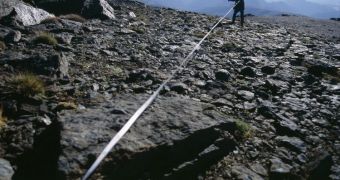According to the conclusions of a new study, it would appear that the vegetation covering Europe's mountains is moving to higher altitudes, on account of rising temperatures. The phenomenon is triggered by global warming, and was predicted years ago.
This investigation covered multiple areas of Europe. A total of 66 mountain sites were analyzed, ranging from the northernmost countries to the Mediterranean Sea. The same effect was found to be present regardless of longitude or latitude.
Details of the pan-European research were published in the latest issue of the top journal Science. The work was coordinated by experts at the Austrian Academy of Sciences and the University of Vienna.
Generally, this phenomenon leads to an overabundance of plants living on mountain summits. This happens because species that used to live further downhill are now moving in on those that adapted to surviving on summits millions of years ago.
One of the most worrying conclusions in this research was that the extra number of plants does not imply more richness or diversity. What is happening is the equivalent of a full-scale invasion that lower-altitude plants are conducting due to warming.
For this survey, plant species at all the test sites were monitored in 2001, and again in 2008. Experts used the same standardized measurement procedures, in order to produce consistent information.
Scientists Harald Pauli, Michael Gottfried, Stefan Dullinger and Georg Grabherr found that northern and central European summits tended to display an increased number of species, whereas sites closer to the Mediterranean exhibited stagnating or declining numbers.
“Our results showing a decline at the Mediterranean sites is worrying because these are the mountains with a very unique flora and a large proportion of their species occur only there and nowhere else on Earth,” Pauli explains, quoted by AlphaGalileo.
The expert holds an appointment with the Global Observation Research Initiative in Alpine Environments (GLORIA) program. His colleague, Michael Gottfried, says that the higher number of plants of central and northern summits is not necessarily something to be happy about.
“The newly appearing plants are predominantly more widespread species from lower elevations and will pose increasing competition pressure on the rarer cold-loving alpine flowers,” he explains.

 14 DAY TRIAL //
14 DAY TRIAL //